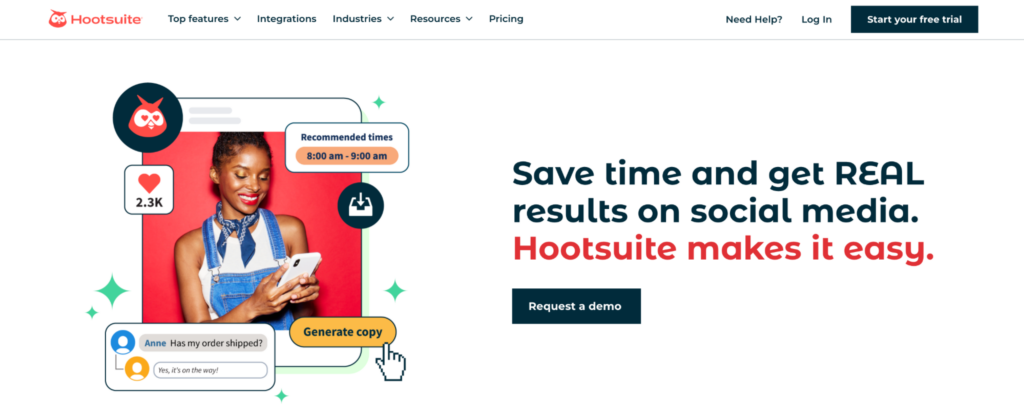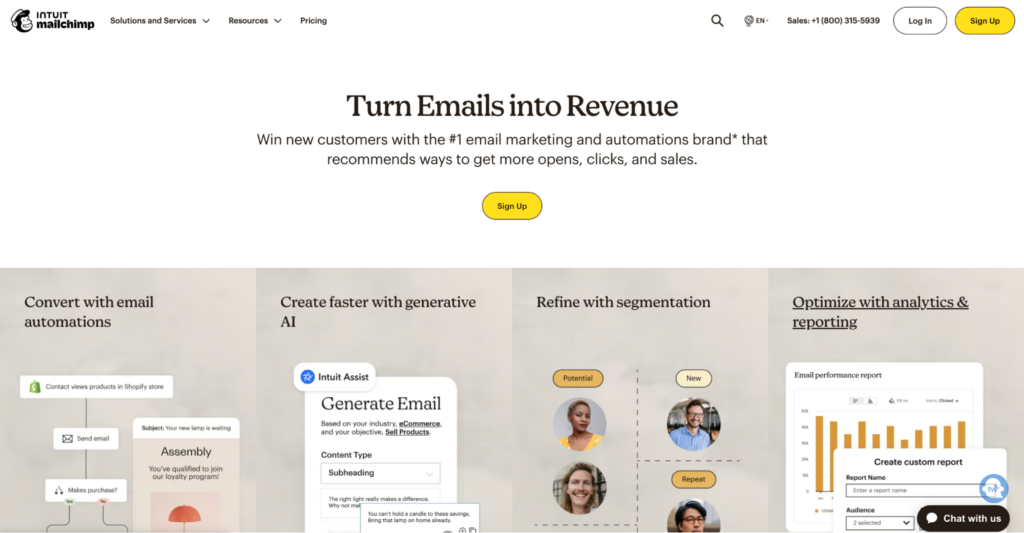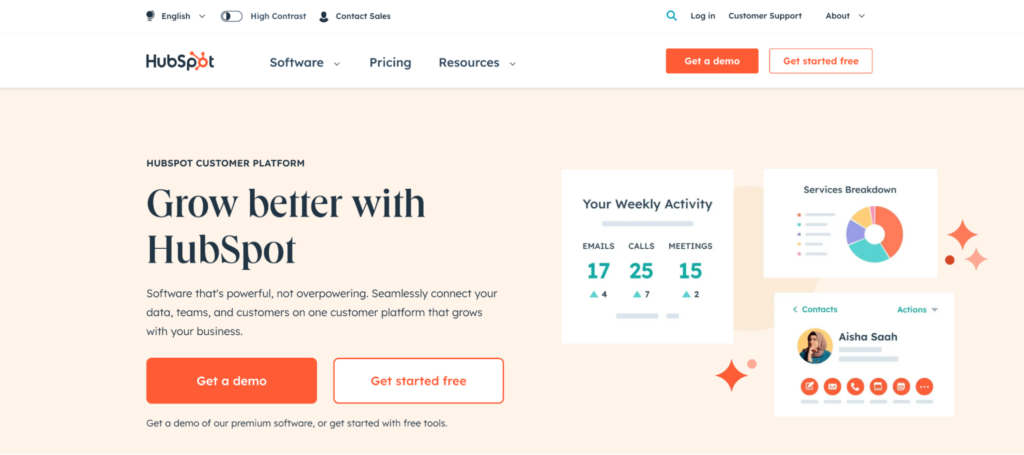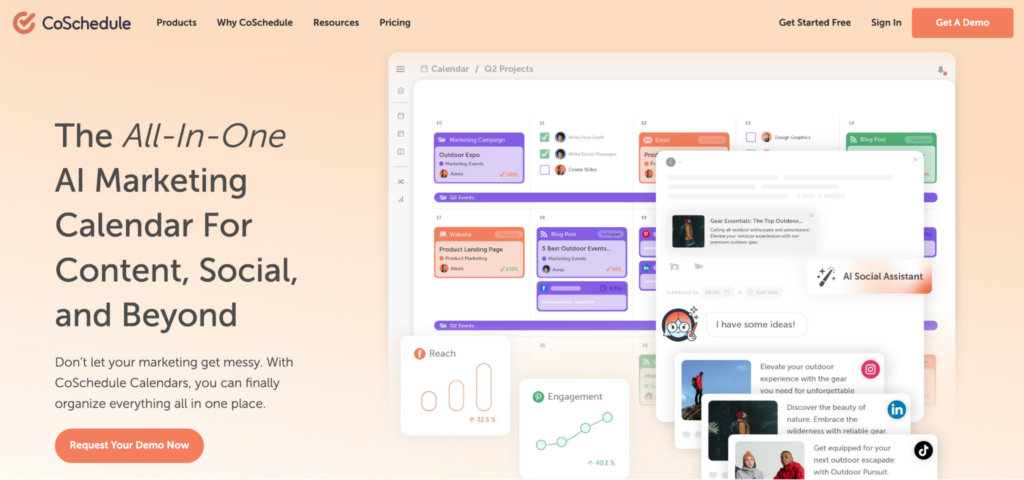Content is king is a popular axiom coined in Bill Gates’s 1996 essay with the same title, where he suggested that the bulk of the money people make from the internet would come from content. Nearly three decades later, we can see that Gates wasn’t wrong. Content is the driving force of many companies—ranging from small solo businesses to medium-sized companies to unicorn enterprises.
Content marketing gives businesses the ability to reach their target audience, provide value to existing customers, showcase their expertise, and garner sales. However, businesses need to invest a ton of time, skills, and resources to properly execute their content marketing strategy.
That’s where automation comes into play.
Automating your content marketing processes allows you to streamline content creation and distribution, generate and nurture leads more effectively, and make smarter, data-driven decisions.
In this article, we’ll explore what content marketing automation is, the types of content marketing automation, and how to implement automation in your content marketing processes.
What is content marketing automation and how does it work?
Content marketing automation involves using software and tools to simplify and streamline various aspects of the content creation, distribution, and management process. This enhances consistency, efficiency, and targeted content delivery across different channels.
When done right, content marketing automation handles repetitive, manual tasks, which, in turn, allows you to allocate more time and resources to creating high-quality content marketing strategies that’ll move the needle toward business growth.
Typically, content marketing automation includes:
- Content creation. Tools may help generate content ideas, automate writing, or assist in content curation.
- Scheduling and publishing. Some automation platforms enable scheduling content publication across various channels, ensuring timely and organized delivery.
- Distribution. Automation can help you share content on social media, deliver email campaigns, and distribute content to reach your target audience.
- Analytics and optimization. Tracking and analyzing content performance metrics help refine strategies, and some tools automate this process.
- Personalization. Automation allows you to tailor content to specific audience segments, which increases your relevance, helps you foster a closer relationship with them, and improves their chances of converting.
Types of Content Marketing Automation
Content automation comes in various forms, catering to different stages of the content marketing process. Here are some key types:
1. Content creation automation
This involves using certain tools or features to simplify the content creation process. This often happens in two ways:
- AI-generated content. This refers to using advanced algorithms and natural language processing (NLP) to automatically generate written content, including articles, blog posts, and product descriptions.
- Content templates. This involves using pre-designed structures and outlines as the foundation for creating specific types of content. Users can fill in the template with relevant information, speeding up the creation process.
2. Content curation automation
This involves using aggregation tools and/or Really Simple Syndication (RSS) feeds to automatically gather and organize content from different sources such as websites or blogs, based on predefined criteria. This helps you stay updated and provides you with a content swipe file you can reference at any time.
3. Content distribution automation
This involves using tools to automatically disseminate content through your chosen distribution channels, based on preset instructions, criteria, and triggers. There are two major kinds of content distribution automation:
- Social media scheduling tools. They allow users to plan and schedule their content/posts across different social media platforms, ensuring consistent and timely distribution.
- Email campaign automation. This involves automating the delivery of targeted emails based on user behavior or triggers.
4. Analytics and reporting automation
Some companies, especially those that run robust content marketing strategies, automate their analytics and reporting. Here are some ways they do that:
- Performance tracking tools. This involves automatically monitoring key performance indicators (KPIs)—such as website traffic, click-through rates, and conversion rates—and providing insights into content effectiveness.
- A/B testing tools. This refers to the automatic testing of different content variations to identify the most successful elements and optimize future content strategies.
5. Personalization automation
This refers to the use of technology to tailor marketing messages, content, and experiences to individual users or segments. These personalization tools use algorithms and artificial intelligence to analyze customer behavior, data, and preferences, allowing marketers to deliver highly targeted and relevant content. This includes personalized emails, website recommendations, product suggestions, and more.
The goal of personalization automation is to enhance the customer experience, increase engagement, and improve conversion rates by delivering content that resonates with each individual’s interests and needs.
Holger Sindbaek, the owner of World of Card Games, shares, “When we delved into our user data, we discovered a goldmine of insights. We noticed distinct patterns between our active and inactive players. This revelation led us to develop a sophisticated segmentation system for email marketing strategy. For active users, we created emails showcasing advanced game levels and exclusive features, effectively upselling based on their engagement patterns. On the flip side, we crafted re-engagement campaigns for inactive users, using data to understand their drop-off points and offering personalized incentives to reignite their interest. This strategic segmentation, informed by deep product analytics, nurtured our community and saw our conversion rates climb significantly.”
6. Workflow automation
This involves using tools to streamline and automate repetitive tasks and processes within an organization. These tasks include data entry, assigning responsibilities, setting deadlines, approving documents, and notifying team members about progress.
Workflow automation aims to reduce manual effort, minimize errors, improve efficiency, and enhance overall productivity by allowing systems to handle routine tasks automatically. This process often involves the integration of different marketing software applications and systems to create a seamless flow of work.
Why is content marketing automation beneficial?
Content marketing automation offers several benefits that contribute to the effectiveness and efficiency of marketing strategies. Here are some of those benefits:
1. Saves time and resources
Having to manually create and post content on social media or send emails every single day is time-consuming, expensive, and can cause your team to burn out. Using automation software for these tasks will free up time and resources for you and your team to focus on (and invest in) more important strategic activities.
2. Improves personalization and targeting
With automation tools, you can segment your audience based on demographics, psychographics, and even firmographics. This allows you to create and automate the delivery of content that’s tailored to each segment’s interests, needs, and pain points. This customization improves relevance, engagement, and overall user experience.
3. Increases productivity
If your marketing team is finding it hard to come up with ideas, marketing automation tools can suggest some keywords you can focus on and trends to explore—which takes the guesswork out of content creation. And because these tools execute repetitive tasks much quicker and more accurately than humans can, they increase the productivity and efficiency of your marketing team as a whole.
4. Helps you run tests
When it comes to gathering and analyzing data, human marketers are nowhere near as adept as automation tools. These tools track the performance of your content and compile them into dashboards, overviews, and graphs for easy visualization and understanding.
You can use this data to run A/B tests, which involve experimenting with different variants of content to see which variant resonates and performs better with your target audience. For example, you could try two or more different email subject lines, website copy, product descriptions, and CTAs to see which one yields the best results. This way, you’re able to optimize your marketing strategy based on real-time performance data.
How to implement automation into your content marketing process
Implementing automation into your content marketing process involves a strategic and phased approach. Here’s a step-by-step guide to automating your content marketing:
1. Set clear objectives
Before automating anything, clearly define your content marketing goals and objectives. Whether it’s increasing brand awareness, improving engagement, or driving conversions, having clear goals will help guide your automation strategy.
2. Identify repetitive tasks
Identify tasks within your content marketing process that are repetitive and time-consuming. This could include social media posting, email campaigns, and analytics tracking. For example, if you always post on LinkedIn with a link to each new article you publish, you can automate this process instead of doing it manually.
3. Choose the right tools
Next, research and select automation tools that match your budget, can handle the tasks you’ve identified, and integrate seamlessly with your existing systems. We’ll look at some great content marketing automation tools in the following section.
4. Integrate analytics and reporting
Incorporate analytics tools into your content automation strategy to track and analyze the performance of your content. If you post on social media platforms, you can use the built-in analytics tools to track your metrics and key performance indicators. Some email automation tools also have analytics and reporting features, but you might need an external analytics tool to unify these analytics, especially if you’re tracking several campaigns simultaneously.
5. Test and optimize
Set up A/B testing for different elements of your content to optimize performance. If you’re focusing on email marketing, it’s best to choose an email automation platform that has A/B testing functionalities. If you want to test landing pages or website copy, you might need an external A/B testing tool.
Use the insights from your experiments to continually refine and improve your content marketing strategy.
6. Iterate and improve
Regularly review your automated processes and how well they’re performing. Iterate your strategy based on the feedback you get from the analytics, changing trends, and evolving business goals.
Is it risky to automate content?
While content automation offers numerous benefits, there are also potential risks you need to consider and manage, such as:
1. Lack of personalization
Automation, if not implemented carefully, can lead to generic and impersonal content. This is because automation tools tend to take a one-size-fits-all approach with content generation and distribution, especially when marketers don’t put enough effort into refining the content.
To prevent this, marketers should ensure that your brand voice and values shine through the auto-generated content. This shows your customers that you care about their interests and needs.
2. Quality concerns
Automated content creation tools may produce content that lacks the nuanced creativity, understanding, and emotional or contextual factors that a human marketer brings to the table. This can lead to issues with tone, style, and overall quality.
Here’s the introduction paragraph of a ChatGPT-generated article on content marketing:
While this can serve as the foundation of a good article, it reads monotonous and stale as-is. Where a human writer would add anecdotes, scenarios, clever puns, and examples, automation tools will not. It’s up to marketers to edit auto-generated content and infuse the human touch it needs to resonate with prospects and existing customers alike.
3. Spam
When done incorrectly, content created with automation tools can be flagged as spam by search engines and email services. This happens because over-reliance on automated content generation can result in the production of duplicated or repetitive content, especially if marketers don’t review it before distribution.
Spammy content can hurt your search engine rankings and cause you to lose credibility in the eyes of your target audience.
Content marketing automation tools
Here are some content marketing automation tools to improve your content marketing processes:
1. Hootsuite
Hootsuite is a social media automation tool that allows businesses and individuals to streamline their online presence across various social networks, including Facebook, Instagram, X (formerly Twitter), and LinkedIn. With Hootsuite, users can schedule and publish posts, monitor social conversations, and engage with their audience.
Hootsuite offers a unified dashboard that simplifies the process of managing multiple accounts, saving social media managers valuable time and effort. It also has analytics tools to track performance, measure the impact of social media campaigns, and gain insights into audience behavior, which helps marketers make data-driven decisions and optimize their social strategies.
2. Zapier
Zapier is a powerful online automation tool that connects various apps, allowing them to work together seamlessly without the need for complex coding skills.
Serving as a bridge between nearly 7,000 applications—including Gmail, Slack, Mailchimp, and Salesforce—Zapier enables users to automate repetitive tasks and workflows by creating “Zaps,” which are automated workflows linking different apps. These Zaps trigger actions in one app based on specific events or triggers in another, facilitating the transfer of data, information, or tasks effortlessly. Users can create Zaps to automate tasks such as sending email notifications, creating calendar events, updating spreadsheets, and more.
With an easy-to-use interface and a vast library of pre-built integrations, Zapier empowers businesses to leverage automation to enhance productivity, reduce manual work, and ensure smooth data flow.
3. Mailchimp
Mailchimp is an email automation platform designed to simplify and optimize the way businesses communicate with their audiences. With a user-friendly interface and a robust set of features, Mailchimp allows users to create, send, and track professional-looking email campaigns effortlessly. The platform offers a variety of customizable templates, which makes it easy for users to design visually appealing newsletters and promotional emails without the need for extensive design skills.
Mailchimp also offers features that help users segment their audience based on various criteria. Then they can set up triggered email campaigns based on subscriber behavior, ensuring timely and relevant interactions. Mailchimp’s analytics tools provide valuable insights into campaign performance, tracking open rates, click-through rates, and other metrics to help users refine their strategies for more effective communication.
4. HubSpot
HubSpot is an all-in-one inbound marketing, sales, and customer service platform that helps businesses attract, engage, and delight customers throughout their entire lifecycle. This platform boasts robust inbound marketing tools that provide users with the ability to create and optimize content, implement SEO strategies, manage social media, send email campaigns, and more—all within a centralized platform.
In addition to its powerful marketing features, HubSpot integrates customer relationship management (CRM) and sales tools to help businesses manage leads, track interactions, and automate sales processes. The CRM system provides a 360-degree view of customer interactions across marketing, sales, and service—which gives users a better understanding of their customers and helps them devise solutions to better fulfill customer needs.
By offering a unified platform that aligns marketing, sales, service, and operations efforts, HubSpot facilitates a holistic and seamless approach to customer acquisition and retention.
5. CoSchedule
CoSchedule is a collaboration and project management platform designed to streamline and organize the moving parts of a marketing team’s workflow. This tool features an intuitive marketing calendar that allows teams to schedule and visualize all their marketing activities—including blog posts, social media posts, emails, and more—in one centralized view. This calendar fosters efficient communication among team members, ensuring everyone is on the same page and aligned with the overall marketing strategy.
CoSchedule integrates with popular marketing tools such as social media platforms, project management tools, and content management systems. These integrations eliminate the need for teams to switch between different applications, empowering teams to be more organized, efficient, and effective in their marketing endeavors.
Elevate your content marketing processes with automation tools
The integration of automation tools into the content marketing process enables marketers to streamline workflows, improve collaboration, and deliver personalized content to their target audience promptly.
The key to succeeding with content marketing automation is to strike a balance between automated content and authentic, value-driven content creation. Content marketing automation tools aren’t just about efficiency—they’re also about innovation as they allow marketers to focus on crafting creative strategies while ensuring that their content resonates with their target audience.
If you’re searching for the right automation tools for your business, check out CompareCamp. CompareCamp is one of the leading resources for online product reviews and comparisons written by industry experts. With this resource, you can learn more about the key features of software and business apps that can affect your buying decisions and help you make the right choice.






